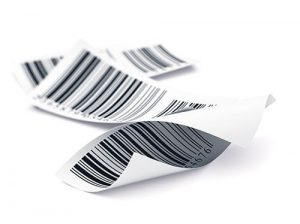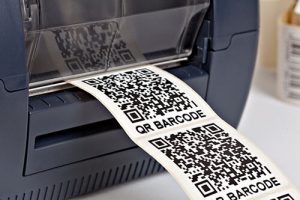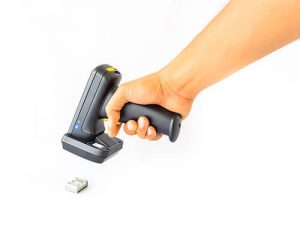A vital stage of implementing a new fire and rescue asset management software solution into your service is choosing the right tagging solution that will help you optimise asset tracking and employee productivity. Choosing the correct tagging option the first time won’t only save you money but will also help you sail through labelling your assets and help all your team transition to the new fire and rescue asset management system with ease.
So how do you choose the correct asset tagging option for your fire and rescue service?
First things first, know your options. There are four main types of tags that come in a range of shapes and sizes. These are:
Barcode Labels
This is the tagging option you see every day as they are the most commonly used across multiple industries, from retail stores to supermarkets and shipping. It’s comprised of thick and thin lines with a serial number to identify the asset. Easy to print and produced from a dedicated label printer they adhere to a surface quickly. A 1D option that requires line of sight to scan and account for.
QR (Quick Response) Codes
This tagging option is a variation of the barcode that works with black and white squares but can contain more technical information than its predecessor, you may have seen these in the advertising or medical industry. Printable and easy to produce, these tags can work with mobile cameras and handheld scanners. Another 1D option that requires a scanner to be in direct line of sight and proximity.
NFC (Near Field Contact) Tags
This tagging option takes durability to the next level. They are used in a variety of ways you may not always visibly see, such as mobile phones to transfer data or ID cards to gain access to buildings. The NFC chip can be contained in plastic casings or disguised under normal labels to deter theft. NFC tags are considered as a 2D option and like the QR code can hold much more information than a barcode label. Close contact is needed to gather the information from each tag, one at a time.
RFID (Radio Frequency Identification) Tags
This tagging option is an expansion on the NFC tag, durable but more importantly a step up in aiding productivity and combating the issues of line of sight scanning. RFID tags are 2D options and can be scanned at a distance while scanning multiple tags at once, the ultimate efficiency tool. Available with active and passive options the tags emit radio waves to transmit information to a reader. These tags have been highly effective in the emergency service sector, including fire and rescue services and healthcare industries.
Now that you know the types of tags available the second task to think about is your fire and rescue service and the kind of environment your assets are stored in. Each asset tagging solution from above has its benefits and can suit a specific role. For example:
- A standard storeroom/warehouse may only need a basic barcode label for identification.
- A healthcare organisation may need more durable polymer labels that can be wiped clean regularly.
- A media company may have archives that are stored at a lower temperature to preserve video/image files so will need labels that don’t degrade easily.
- A fire and rescue service will have assets that are used in more harsh environments so asset tags such as RFID labels are more suited as they are very durable.
- Finally, an organisation could have so many assets that audit checks take weeks to get through, RFID tags and scanners could reduce that time by at least half by simply standing in the room and collecting the information via an RFID reader.
Choosing the right asset tagging solution all comes down to how your fire and rescue service operates now and how you envisage its growth in the future. Every fire and rescue service is different in the way they work but there is always an asset tag that fits the job. The best way you can approach this new stage in your business journey is by investigation and consultation with your fire and rescue service asset management software solution implementation team. They will help you work through the trial and error stages of the process and offer the best advice from their experiences working with many industries on past implementations.
The CSS on-boarding team work closely with every fire and rescue service to identify their asset tagging needs in conjunction with the functionality of Pro-Cloud BlueLight, our fire and rescue service asset management software solution. This is to ensure the right solution is chosen from the beginning and implementation timescales are adhered to with the aim of improving asset tracking, accessibility and productivity across all parts of the fire and rescue service.
If you would like to find out more about the asset tagging solutions that CSS offer and our Pro-Cloud BlueLight asset management software please visit: https://www.pro-cloud-bluelight.com/labelling/
Alternatively, please contact the Business Development team via: sales@csseurope.co.uk or call 0800 652 0488





